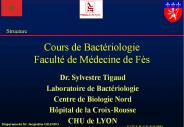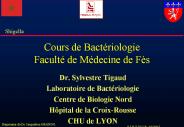Neisseria PowerPoint PPT Presentations
All Time
Recommended
Neisseria gonorrhoeae Nealia House Gonorrhea Topic Overview Biology of Neisseria gonorrhoeae Survival Within Host Screening Treatment Control/Surveillance Gonorrhea ...
| PowerPoint PPT presentation | free to download
NEISSERIA * The genus Neisseria contains two important pathogens: 1. Neisseria meningitidis 2. Neisseria gonorrhoeae. N. meningitidis causes meningitis and ...
| PowerPoint PPT presentation | free to view
Neisseria gonorrhoeae Case Study 2 Group 4 Neisseria gonorrhoeae images from neisseria.org Characteristics Gram Negative Diplococcus Can be Found Inside of WBC s ...
| PowerPoint PPT presentation | free to view
Immunofluorescence: B) Culture: Media used: Colony morphology: Gram s smear: Reveals Gram negative cocci in pairs with adjacent sides concave.
| PowerPoint PPT presentation | free to download
... urethral or vaginal columnar epithelial cells by pili and other surface proteins ... Transmits with pili. Has adhesins on it's fimbrae ...
| PowerPoint PPT presentation | free to view
Transferrina, lactoferrina, hemoglobina: proteinas que intervienen en la adquisici n de hierro para el metabolismo bacteriano. Beta lactamasa: ...
| PowerPoint PPT presentation | free to view
flu-like symptoms. skin, particularly. many organisms. mouth muosa. 10. Tertiary. several years later ... in US. symptoms. flu-like. severe systemic disease ...
| PowerPoint PPT presentation | free to view
All are oxidase positive and most are catalase positive ... Erythema. Cervical tenderness. REF: http://www.telemedicine.org/GON.HTM ...
| PowerPoint PPT presentation | free to view
CDC * Lyme disease ... response develops disease relapses new antigens expressed no immunity disease reappears * Diagnosis no culture no serological test detected ...
| PowerPoint PPT presentation | free to download
Title: Microarray data analysis Author: Marek Basler Last modified by: Marek Basler Created Date: 3/29/2005 10:16:48 AM Document presentation format
| PowerPoint PPT presentation | free to view
We would like to show you a description here but the site won t allow us.
| PowerPoint PPT presentation | free to view
Neisseria utilize sugars oxidatively only (acid in 'O' tube) ... Most of the carbohydrate utilization tests function by simple pH indicator ...
| PowerPoint PPT presentation | free to view
THE GENUS NEISSERIA Neisseriae are gramnegative cocci arranged in pairs, so they are diplococci. This genus includes two species pathogenic for humans: N. gonorrhoeae ...
| PowerPoint PPT presentation | free to view
Invasive meningococcal disease (IMD) is a life-threatening condition caused by the bacterium Neisseria meningitidis (N. meningitidis), an encapsulated gram-negative diplococcus that is a pathogen exclusive to humans. N. meningitidis is carried harmlessly in the nasopharynx of approximately 5?11% of adults and up to 25% of adolescents. Life-threatening disease occurs when the bacterium invades body tissue, which most commonly manifests as meningitis or septicemia. The disease is transmitted via respiratory droplets, through close or prolonged contact with an infected individual. N. meningitidis is classified into 13 distinct serogroups; however, almost all invasive disease in humans is a result of infection with one of 6 serogroups.
| PowerPoint PPT presentation | free to download
Lyme disease. Relapsing fever (other borrelia) Leptospira (leptospirosis) Neisseria ... scapularis, tick vector for Lyme disease. Also known as Ixodes dammini. ...
| PowerPoint PPT presentation | free to download
Meningitis, septicaemia, gonorrhoea, respiratory infection ... Spread from infected mother to neonate as ocular infection during birth.
| PowerPoint PPT presentation | free to view
Restriction endonucleases and DNA methyltransferases from Haemopilus influenzae and Neisseria gonorrhoeae Dr Andrzej Piekarowicz Institute of Microbiology
| PowerPoint PPT presentation | free to download
CDC * Lyme Disease erythematous rash ... response develops disease relapses new antigens expressed no immunity disease reappears * Diagnosis no culture no serological ...
| PowerPoint PPT presentation | free to download
Empirical observation of the Z2491 genome. Empirical observation of the MLST data ... Jolley et al (2000) Carried meningococci in the Czech Republic: a diverse ...
| PowerPoint PPT presentation | free to download
22,500 episodes diagnosed in GUM clinics in England & Wales (2001) Highest ... DoH sentinel surveillance. PHLS Communicable Disease Surveillance Centre (CDSC) ...
| PowerPoint PPT presentation | free to view
Use of a proteomic approach to identify secreted proteins of Neisseria gonorrhoeae
| PowerPoint PPT presentation | free to view
| PowerPoint PPT presentation | free to view
| PowerPoint PPT presentation | free to view
Towards an understanding of global patterns of simple sequence repeat-mediated phase variation during host persistence of Campylobacter jejuni and Neisseria meningitidis
| PowerPoint PPT presentation | free to view
Introduction to antimicrobial resistance Since the development of Penicillin in 1920, ... The testing included susceptibility analysis of penicillin G, tetracycline, ...
| PowerPoint PPT presentation | free to download
1. Transformasi masuknya DNA telanjangkedalamselbakterisehinggaterjadiperubahanmaterigenetikselbakteri. Contoh: Streptococcus . pneumoniae, Neisseria
| PowerPoint PPT presentation | free to view
Title: Neisseriae Neisseria gonorrhoeae Neisseria meningitidis Author: d partement Last modified by: Sylvestre Tigaud Created Date: 10/2/1998 10:05:42 PM
| PowerPoint PPT presentation | free to download
Nitrogen Fixing Bacteria Azotobacter, Beijerinckia Nitrogenase is oxygen sensitive Cysts, capsule, and poly- -hydroxybuytrate Neisseria and Relatives Neisseria, ...
| PowerPoint PPT presentation | free to download
Title: Neisseriae Neisseria gonorrhoeae Neisseria meningitidis Author: d partement Last modified by: Sylvestre Tigaud Created Date: 10/2/1998 10:05:42 PM
| PowerPoint PPT presentation | free to download
Title: Neisseriae Neisseria gonorrhoeae Neisseria meningitidis Author: d partement Last modified by: Sylvestre Tigaud Created Date: 10/2/1998 10:05:42 PM
| PowerPoint PPT presentation | free to download
Fam.Neisseriaceae G neros: Neisserias Moraxella Kingella Acinetobacter Oligella Las Neisserias Cocos Gram negativos Caracter sticas Diplococos kidney bean shaped ...
| PowerPoint PPT presentation | free to download
acute pyogenic meningitis. Lymphocytes-increased. viral meningitis. ... Pyogenic (pneumococci, streptococci, staphylococci, Neisseria, Legionella species) ...
| PowerPoint PPT presentation | free to view
Vaccines containing capsular polysaccharide as immunogen are directed against : Streptococcus pneumoniae Haemophilus influenzae Neisseria meningitidis Salmonella typhi.
| PowerPoint PPT presentation | free to view
... Gran actividad sobre cocos +: Neisserias, anaerobios BG+ (Clostridium y Bacillus),Espiroquetas, Actynomicetales. Penicilinas Penicilinasa Resistentes: ...
| PowerPoint PPT presentation | free to view
... Mycobacterium tuberculosis Neisseria meningitidis Vibrio cholerae Clostridium tetani Trypanosoma Plasmodium Entamoeba histolytica ... life or longer if breast ...
| PowerPoint PPT presentation | free to download
Survey of Microbes Part I: Important prokaryotes Gram negative organisms, archaea, and others IMPORTANT GRAM NEGATIVE PROTEOBACTERIA G- cocci Neisseria: _____ N ...
| PowerPoint PPT presentation | free to view
... can lead to PID Treatment Cephalosporin antibiotic class Cefixime or ceftriaxone with doxycycline Neisseria gonorrhoeae Laboratory Diagnosis Typical GN dc, ...
| PowerPoint PPT presentation | free to view
Penicillin is an antibiotic derived from the fungal mold Penicillium notatum. It is used to treat infection from various bacteria’s including streptococcus pneumonia, Neisseria gonorrhoea, clostridium, listeria, peptococcus, and peptostreptococcus.
| PowerPoint PPT presentation | free to download
Real-Time PCR Applications: Detection of chromosomally mediated penicillin-resistant Neisseria gonorrhoeae Quantitative expression of mRNA encoding pro-inflammatory ...
| PowerPoint PPT presentation | free to download
Real-Time PCR Applications: Detection of chromosomally mediated penicillin-resistant Neisseria gonorrhoeae Quantitative expression of mRNA encoding pro-inflammatory ...
| PowerPoint PPT presentation | free to download
Epidemiology of Neisseria gonorrhoeae Sexually Transmitted Disease Program Los Angeles County Department of Health Services
| PowerPoint PPT presentation | free to download
Modest activity against Staphylococcus aureus Gram-negative bacteria Escherichia coli, Klebsiella pneumoniae, Proteus spp. Haemophilus influenzae, Neisseria spp.
| PowerPoint PPT presentation | free to download
Louis Pasteur 1822-1895 Diplococci Neisseria gonorrhoeae Streptococci Streptococcus pyogenes Staphylococci Staphylococcus aureus Bacilli Escherichia coli Spirals ...
| PowerPoint PPT presentation | free to download
STD (Sexually Transmitted Diseases) * Gonorrhea : Neisseria gonorrhoeae * Termasuk dlm famili Neisseriaceae Morfologi ...
| PowerPoint PPT presentation | free to download
scabies. Lice. Demodex. Borrelia burgdorferi lyme disease. Babesia. Trypanosoma ... Tapeworm - proglottid. Schistosoma male and female. Neisseria ...
| PowerPoint PPT presentation | free to view
Gonorrhea is a sexually transmitted disease (STD). It's caused by infection with the bacterium Neisseria gonorrhoeae. It tends to infect warm, moist areas of the body, including the: urethra
| PowerPoint PPT presentation | free to download
Gonorrhea is a sexually transmitted disease (STD). It's caused by infection with the bacterium Neisseria gonorrhoeae. It tends to infect warm, moist areas of the body, including the: urethra
| PowerPoint PPT presentation | free to download
... Neisseria meningitidis, Capnocytophaga canimorsus (after dog bites) ... Suspect with flu-like illness and severe headache in endemic areas! 65 year old woman ...
| PowerPoint PPT presentation | free to download
Gonorrhea in women is caused by the bacteria Neisseria gonorhoeae which infects the inner lining of the bladder, cervix, rectum, throat, and the whites of the eyes. Gonorrhea disease can spread through the bloodstream to other parts of the body, especially the skin and joints.
| PowerPoint PPT presentation | free to download
Most common place for infectious agents to gain access to the body ... Streptococcus pneumonia, Neisseria meningitides, Staphylococcus aureus) ...
| PowerPoint PPT presentation | free to view
Doen as bacterianas Prof. Jo o Paulo Gurgel Meningite Gonorr ia Neisseria gonorreae (diplococo) Aderem-se aos SPTZ por seus pili Endotoxina danificam as ...
| PowerPoint PPT presentation | free to download
Protein II (Opa) helps attach, penetrate cells ... Looks like Neisseria. Negative in CTA; DNAse 8. Moraxella catarrhalis in sputum ...
| PowerPoint PPT presentation | free to view
describe and list the way in which immunodeficiencies are ... pyogenic bacteria. MAC complement Meningococcal infections eg. Neisseria. component deficiencies ...
| PowerPoint PPT presentation | free to view
Prze ywalno Neisseria gonorrhoeae w czasie suszenia i przechowywania Sk ad substancji ochronnej 24 h 2-4 miesi ce 1 rok Glukoza 7,5% + albumina 5% 1,3% 1,0% 0 ...
| PowerPoint PPT presentation | free to view
5 of the top 10 infectious diseases requiring notification are STDs: chlamydia, ... Condylomata lata. Gonorrhea. Caused by Neisseria gonorrhoeae. 300,000 cases/year ...
| PowerPoint PPT presentation | free to view
Lysis of gram-negative organisms. Chemotaxis and activation of leukocytes ... Lysis of Neisseria spp. and other pathogens. C3a, C4a, C5a. Phagocyte recruitment. C3b ...
| PowerPoint PPT presentation | free to view
























































